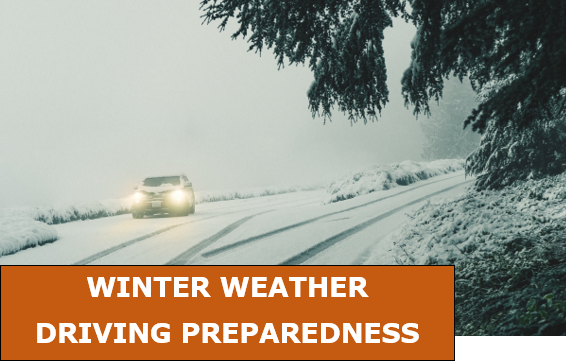Colder weather presents different challenges for driving and maintaining your vehicle. Before winter begins, make sure your
vehicle has had proper maintenance and is prepared for temperature changes.
How to decrease hazard risks:
- Coolant: Ensure coolant is rated for temperatures in your area and is properly mixed
- Battery: Make sure your battery has enough Cold Crank Amps to start your vehicle in colder weather. Ensure connections are clean and tight. Test voltages to make sure the battery has enough power
- Belt and Hoses: Check the condition of belts and hosed for cracking or leaks
- Windshield Wiper Fluid: Make sure the fluid is kept topped off and rated for the colder temperatures during the winter
- Tires: Tire pressure should meet manufacturer guidelines. Pressure will fluctuate between hot and cold temperatures. Tread depth should be less than 2/23″.
- Supplies: Make sure your vehicles has supplies for winter weather and in case you are stuck on the road, including:
- Blankets
- Water
- Ice Scraper
- Kitty Litter
- Jumper Cables
- Flash Light
- Cell Phone Charger
- Snacks
SAFE WINTER DRIVING
Snow and ice make driving dangerous. Although the best way to stay safe is to not travel during inclement weather, it’s
not always possible to stay off the roads in these conditions. Before winter begins, familiarize yourself with some safety
tips for driving in snow and ice.
How to decrease hazard risks:
- Reduce your speed
- Gently tap on the brake until you slow enough to stop. Do not press hard on the brake
- Do not use your cruise control
- Should you start to slide, turn into the slide rather than correcting the turn. Turn your wheels in the direction that the rear of the car is sliding.
- Steep hills, bridges and other areas that are not well traveled or treated with salt or brine should be avoided when possible.
- Remember to always keep yours eyes on the road in the direction you are moving.


0 Comments